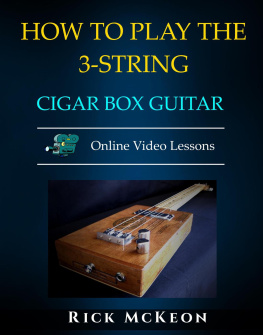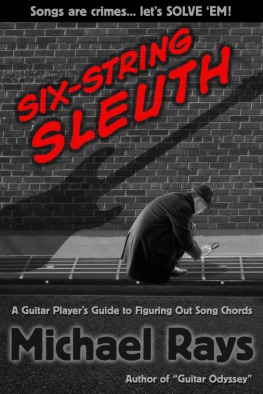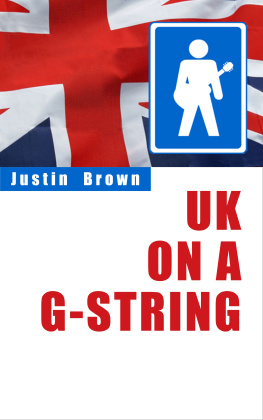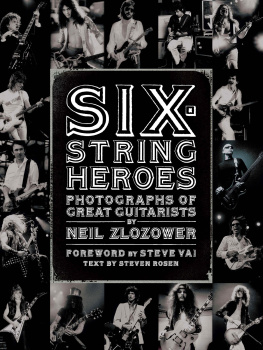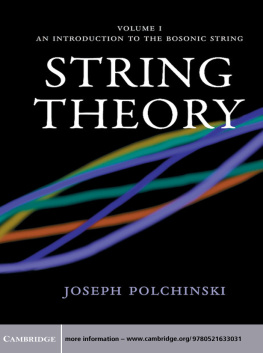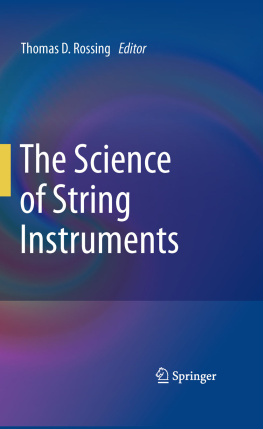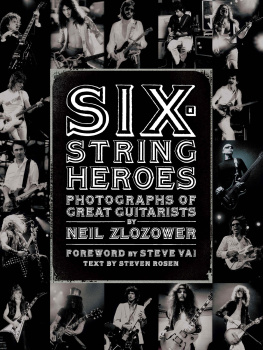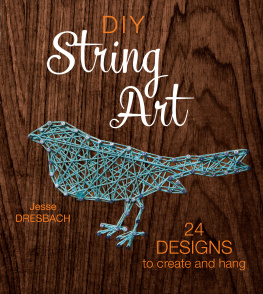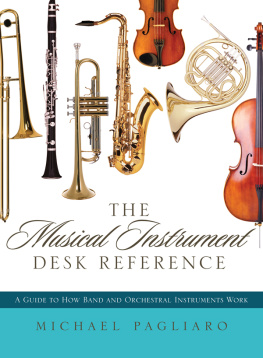About the Author
Michael Pagliaro has served as professor of instrumental music and musical instrument technology, is founder and CEO emeritus-in-counsel of Ardsley Musical Instrument Service, Ltd., and director of research and development for Contemporary Music Laboratories. He is an authority in musical instrument technology and the inventor of several musical instrument products. He is author of Everything You Should Know about Musical Instruments (1992), The Violin: How It Works (2002), The Flute: How It Works (2003), The Violin Workbook (2004), The Musical Instrument Desk Reference (Scarecrow Press, 2012), and The Instrumental Music Directors Guide to Comprehensive Program Development (Rowman and Littlefield, 2014).
Acknowledgments
The following individuals have generously contributed their talent and effort to assist in the final production of this work. My most grateful appreciation to:
My son, Michael J. Pagliaro, Jr., for his work in producing and editing the photographs.
My grandson, Michael J. Pagliaro, III, for his drawings and design contributions.
James OKeefe, artist, sculptor, and computer technology specialist for producing the computerized graphics, drawings of the ancient instruments, fingering charts, and for finessing the formatting and cover of this book.
Thomas Caserta, celebrated academic in the New York area. As a premier S.A.T. test preparation specialist, Tom applied his extensive knowledge of English grammar and usage acquired through his Jesuit education at Fordham Preparatory School and Fordham University to assist in editing the text in this book.
The following extraordinarily gifted professionals in the field of musical instrument fabrication and distribution have generously granted permission to use information and artwork from their websites. Listed in alphabetical order they are:
Bob and Mark Gollihur, double bass authorities at
http://www.gollihurmusic.com;
Scott Hershey, master luthier at
http://www.hersheyviolins.net;
Eitan Hoffer, archetier extraordinaire, specialist in the fabrication of ancient bows at
http://www.hoffer-bows.com;
Lars Kirmser, publisher and musical instrument specialist at
http://www.musictrader.com;
Gregg Miner, President, The Harp Guitar Foundation at
http://www.minermusic.com;
Otis A. Tomas, master luthier at
www.otis@fiddletree.com;
Jimmy Sang Wang, bow manufacturer at
http://www.wangbow.com.
Bennett Graff, a special note of appreciation to my editor for the support, encouragement, and technical assistance he has given me in assembling and formatting this manuscript.
Appendix
Instrument Diary
This chapter is designed to document the history and maintenance of an instrument. By entering all the relevant information on a regular basis, the owner will have a reference for periodic maintenance, information for a possible sale in the future, and a history of the instrument both past and future. Not every category listed will be relevant to every instrument. Fill in those that are relevant and add any information that suits your particular situation.
My (Instrument) __________________
Instruments History
Owners name _________________________________________
Date of purchase __________________________________________
Where purchased ______________________________________
Makers label _________________________________________
Model name and number __________________________________
Date made ____________________________________________
New [] previously owned []
Previous owner(s) name(s)
__________________________________________________________
Identifying marks, label, serial number _______________________
__________________________________________________________
Sellers Information
Name ________________________________________________
Address ______________________________________________
Phone ________________________________________________
Email ________________________________________________
Website ______________________________________________
List or asking price _____________________________________
Price paid ____________________________________________
Notes
N.B. When making an entry include date, action, repair, replacement or service, part serviced, brand or description of replacement part, source, technicians name and contact information, etc., keep all invoices in a file for future reference.
Maintenance Record
The Instrument General Service
String Changes
Peg
Nut
Bridge
Tailpiece
Tail Gut
Fine Tuners
Saddle
End Pin or End Button
Major Repairs
Detail the damage, cause, how repaired, by whom, cost, date.
Notes
The Bow
Rehair
Cleaning
Repair
Other
Chapter 1 Where These Instruments Came From
Introduction
The First String Instruments
The history of musical instruments has been investigated by some of the greatest minds in musicology and academia with results mired in conflicting opinions, contradictory factoids, and a general disarray and confusion of information. Because of this conflict and confusion the following pages dealing with that history are intended to be a simple survey of the subject based on assorted points of view on each topic. In many cases the experts themselves qualify their findings with a disclaimer similar to this one.
In an attempt to avoid the endless dialog that would be required to elaborate on these issues, this first section of the survey will cover the history of non-bowed, plucked or strummed string instruments. The sections which follow will give an overview of what probably happened which resulted in the evolution of the violin family instruments we now use. Timelines preceding each section will show the sequence in which the instruments appeared.
This chapter is divided into four parts. Part 1 will deal with plucked instruments, part 2 with early bowed instruments, part 3 with the appearance of the violin family of instruments, and part 4 will cover the history of the bows.
Plucked Instruments
Timeline
The following timeline shows some of the early plucked instruments in an ethereal, non-specific setting representative of the lack of their exact history. This is the first phase in the evolution of string instruments.


